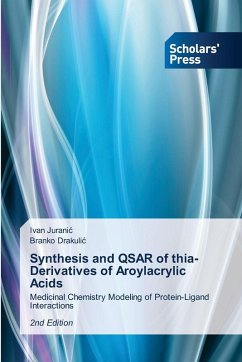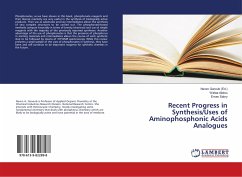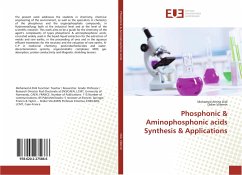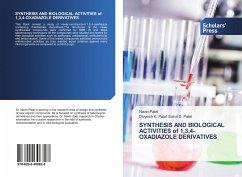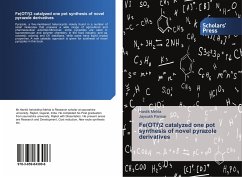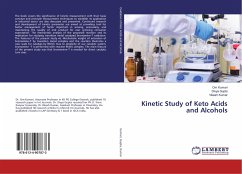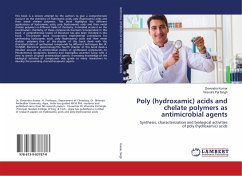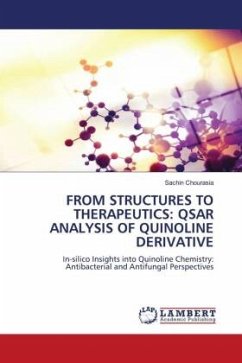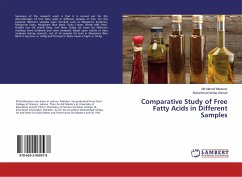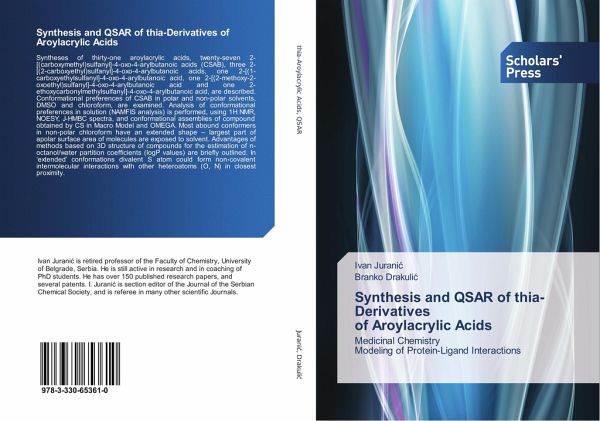
Synthesis and QSAR of thia-Derivatives of Aroylacrylic Acids
Medicinal Chemistry Modeling of Protein-Ligand Interactions
Versandkostenfrei!
Versandfertig in 6-10 Tagen
62,99 €
inkl. MwSt.

PAYBACK Punkte
31 °P sammeln!
Syntheses of thirty-one aroylacrylic acids, twenty-seven 2-[(carboxymethyl)sulfanyl]-4-oxo-4-arylbutanoic acids (CSAB), three 2-[(2-carboxyethyl)sulfanyl]-4-oxo-4-arylbutanoic acids, one 2-[(1-carboxyethylsulfanyl]-4-oxo-4-arylbutanoic acid, one 2-[(2-methoxy-2-oxoethyl)sulfanyl]-4-oxo-4-arylbutanoic acid and one 2-ethoxycarbonylmethylsulfanyl]-4-oxo-4-arylbutanoic acid, are described. Conformational preferences of CSAB in polar and non-polar solvents, DMSO and chloroform, are examined. Analysis of conformational preferences in solution (NAMFIS analysis) is performed, using 1H NMR, NOESY, J-HM...
Syntheses of thirty-one aroylacrylic acids, twenty-seven 2-[(carboxymethyl)sulfanyl]-4-oxo-4-arylbutanoic acids (CSAB), three 2-[(2-carboxyethyl)sulfanyl]-4-oxo-4-arylbutanoic acids, one 2-[(1-carboxyethylsulfanyl]-4-oxo-4-arylbutanoic acid, one 2-[(2-methoxy-2-oxoethyl)sulfanyl]-4-oxo-4-arylbutanoic acid and one 2-ethoxycarbonylmethylsulfanyl]-4-oxo-4-arylbutanoic acid, are described. Conformational preferences of CSAB in polar and non-polar solvents, DMSO and chloroform, are examined. Analysis of conformational preferences in solution (NAMFIS analysis) is performed, using 1H NMR, NOESY, J-HMBC spectra, and conformational assemblies of compound obtained by CS in Macro Model and OMEGA. Most abound conformers in non-polar chloroform have an extended shape - largest part of apolar surface area of molecules are exposed to solvent. Advantages of methods based on 3D structure of compounds for the estimation of n-octanol/water partition coefficients (logP values) are briefly outlined. In 'extended' conformations divalent S atom could form non-covalent intermolecular interactions with other heteroatoms (O, N) in closest proximity.



